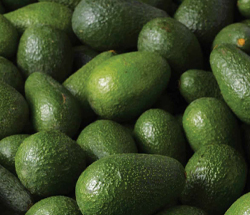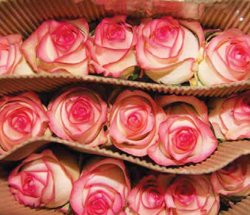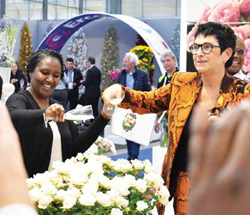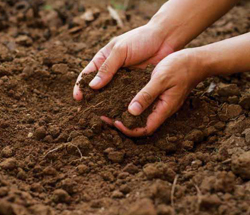What is insecticide resistance modelling and who uses it? One of the most common questions asked of insecticide resistance researchers is “How long will it take for insecticide resistance to occur?”

One way to answer this questions is to look at past events and identify trends that may repeat. This can be informative, but limited to general trends. For example in the crop protection market, it is often predicted that a pest insect that feeds on diverse hosts and is treated with multiple insecticides is much more likely to develop resistance than an insect pest found on a single host plant and has limited exposure to insecticides. These kinds of basic predictions or trends are regularly used by researchers and insecticide manufacturers to prioritise their resistance management activities, focusing on where the risks of resistance development are highest or have most economic or social impact. Predicting resistance development with more accuracy and reliability beyond these trends becomes considerably more difficult.

 The National Agricultural Export Development Board (NAEB) in collaboration with IDH project, flagged off the first reefer container shipment of avocados by sea. IDH, The Sustainable Trade Initiative, is an organisation (Foundation) that works with businesses, financiers, governments and civil society to realise sustainable trade in global value chains and facilitates private sector access to international markets. The shipment alternative, diverting from airfreight to sea freight seeks a long-term business partnership with international buyers.
The National Agricultural Export Development Board (NAEB) in collaboration with IDH project, flagged off the first reefer container shipment of avocados by sea. IDH, The Sustainable Trade Initiative, is an organisation (Foundation) that works with businesses, financiers, governments and civil society to realise sustainable trade in global value chains and facilitates private sector access to international markets. The shipment alternative, diverting from airfreight to sea freight seeks a long-term business partnership with international buyers. Across the floriculture industry, retailers are facing a quality challenge, with exciting opportunities in its wake. With the flower market growing rapidly, flower sellers will flourish with stable supply chains and dependable quality levels; however, today’s retailers, from independent family stores to national supermarket chains, too often receive flowers of inconsistent quality: regularly, batches are unacceptable, with a short vase life, damaged stems, and flowers that are not worth selling due to poor quality on arrival. This leads to unhappy customers and loss of reputation and revenues. Alongside broader industry concerns, like reduced air freight capacity, this problem can significantly limit growth. So where’s the opportunity? It’s right here, and it centers on implementing data-driven quality standards throughout the flower supply chain.
Across the floriculture industry, retailers are facing a quality challenge, with exciting opportunities in its wake. With the flower market growing rapidly, flower sellers will flourish with stable supply chains and dependable quality levels; however, today’s retailers, from independent family stores to national supermarket chains, too often receive flowers of inconsistent quality: regularly, batches are unacceptable, with a short vase life, damaged stems, and flowers that are not worth selling due to poor quality on arrival. This leads to unhappy customers and loss of reputation and revenues. Alongside broader industry concerns, like reduced air freight capacity, this problem can significantly limit growth. So where’s the opportunity? It’s right here, and it centers on implementing data-driven quality standards throughout the flower supply chain.

 Nitrogen is essential to support the development of healthy crops. On average, plant tissues exposed above ground contain around 3-4% nitrogen, which is a significantly higher concentration than levels of other nutrients.
Nitrogen is essential to support the development of healthy crops. On average, plant tissues exposed above ground contain around 3-4% nitrogen, which is a significantly higher concentration than levels of other nutrients. One in five growers say they’re thinking of just leaving their greenhouse completely empty this winter, according to a survey conducted by the Dutch sector organisations Glastuinbouw Nederland and Plantum. Skipping a crop or starting later obviously has serious financial consequences. What many growers don’t realise, however, is that ‘just’ switching off their systems can also have consequences. Next time the pumps, pipes and drippers are put to work, there’s a risk that they could malfunction. A few tips can help to prevent an extra financial damper due to unexpected repair costs.
One in five growers say they’re thinking of just leaving their greenhouse completely empty this winter, according to a survey conducted by the Dutch sector organisations Glastuinbouw Nederland and Plantum. Skipping a crop or starting later obviously has serious financial consequences. What many growers don’t realise, however, is that ‘just’ switching off their systems can also have consequences. Next time the pumps, pipes and drippers are put to work, there’s a risk that they could malfunction. A few tips can help to prevent an extra financial damper due to unexpected repair costs. Flowers live or die based on the availability of water to stems, leaves and blooms. Indeed, water stress may be the most significant factor affecting vase life in cut flowers. Flowers die prematurely when the amount of water being absorbed is lower than the amount lost from the leaves, stems and blooms. Research has shown that several factors can lead to reduced water absorption, including bacteria, air blockages and water quality, especially water pH. Poor water quality can reduce the amount of water absorbed. Without water, individual cells cannot function. This is particularly critical for cut flowers that must get water from a bucket or vase solution. Flowers open by using water to enlarge the petal cells, just as air inflates a balloon. New petal cells are not produced after harvest, so a continuous flow of water is needed by the flower if it is to open fully and remain viable for seven days. Sugars from flower foods in bucket/vase water supply energy to supplement the flower’s naturally occurring sugars.
Flowers live or die based on the availability of water to stems, leaves and blooms. Indeed, water stress may be the most significant factor affecting vase life in cut flowers. Flowers die prematurely when the amount of water being absorbed is lower than the amount lost from the leaves, stems and blooms. Research has shown that several factors can lead to reduced water absorption, including bacteria, air blockages and water quality, especially water pH. Poor water quality can reduce the amount of water absorbed. Without water, individual cells cannot function. This is particularly critical for cut flowers that must get water from a bucket or vase solution. Flowers open by using water to enlarge the petal cells, just as air inflates a balloon. New petal cells are not produced after harvest, so a continuous flow of water is needed by the flower if it is to open fully and remain viable for seven days. Sugars from flower foods in bucket/vase water supply energy to supplement the flower’s naturally occurring sugars. Sustainability & Market
Sustainability & Market 